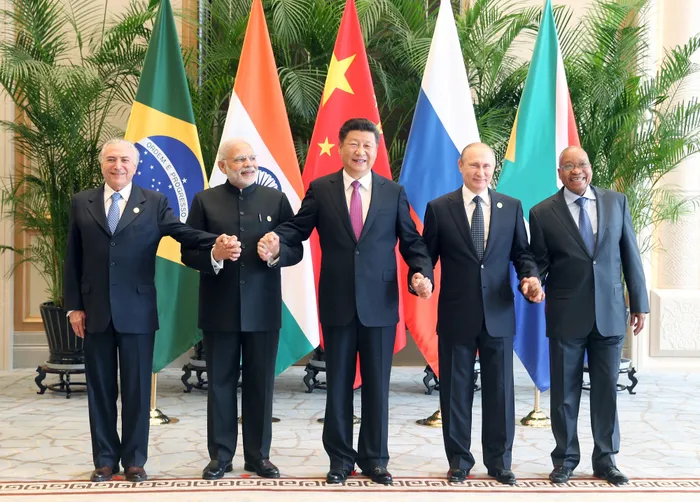BRICS enters new golden decade

Leaders of BRICS countries pose for a group photo at the 8th summit in Goa, India, last year. Picture: Xinhua/Xie Huanchi Leaders of BRICS countries pose for a group photo at the 8th summit in Goa, India, last year. Picture: Xinhua/Xie Huanchi
Entering its second decade, the emerging-market BRICS bloc is shining even more brightly as the five members have been cementing co-operation, building mutual trust and seeking mutual benefits.
In early September, leaders of Brazil, Russia, India, China and South Africa will meet at the 9th BRICS Summit in southeast China's Xiamen, Fujian Province.
As the five developing countries are in similar stages of development and confronted with similar challenges, effective exchanges have proven to be a strong
boost to their economic and social development.
Since the mechanism came into being in 2006, they have improved macroeconomic policy co-ordination, promoted structural reform, infrastructure and taxation co-operation, and pushed forward new progress in fiscal and financial domains.
Their share of the world economy has risen from 12 percent to about 23 percent over the past decade, and their share of world trade volume rose from 11 percent to 16 percent.
These countries have shown no fear of the lacklustre world economy but demonstrated to the world what they can achieve by staying united.
Although the mechanism has seen ups and downs over the past years and each member faces its own set of challenges, the five nations are like five fingers: short and long if extended, but a powerful fist if clenched together.
BRICS economies contributed more than half of world economic growth in the past 10 years, becoming the strongest engine of the global economy.
The grouping, based neither on ideology nor geopolitics, is seen as a new and perhaps better form of global governance in which emerging markets play key roles.
As a multilateral co-operation mechanism without any developed countries, BRICS is bringing the almost silent developing nations into the centre stage of global governance.

Coined by former Goldman Sachs economist Jim O'Neill in 2001, the term "BRIC" referred to Brazil, Russia, India and China, four emerging markets with faster growth and greater potential.
In 2010, South Africa joined the group, and the acronym was changed to BRICS.
In Chinese, BRICS is translated into four characters meaning "gold brick countries" partly to convey the meaning of their promising future.
In the second decade of BRICS, the "golden content" will continue to rise as long as the five economies enhance pragmatic co-operation to resolve differences, improve mutual trust and boost confidence under the mechanism.
With 44 percent of world population, BRICS members enjoy abundant natural and human resources, vast markets, huge growth potential and bright prospects from their policy co-ordination.
As leading forces of developing countries, they should continue to improve co-ordination and make emerging-market economies and developing countries play a bigger role in international affairs and contribute to building a robust and more balanced global economy.
Pessimists who predict a "fading shine" of BRICS will be disappointed again as "true gold fears no fire".